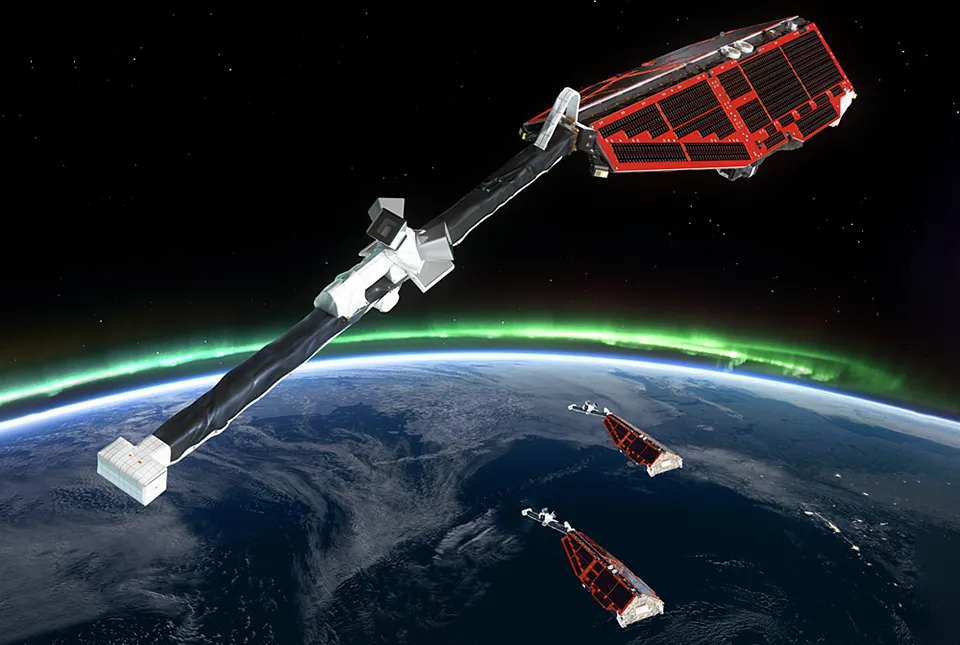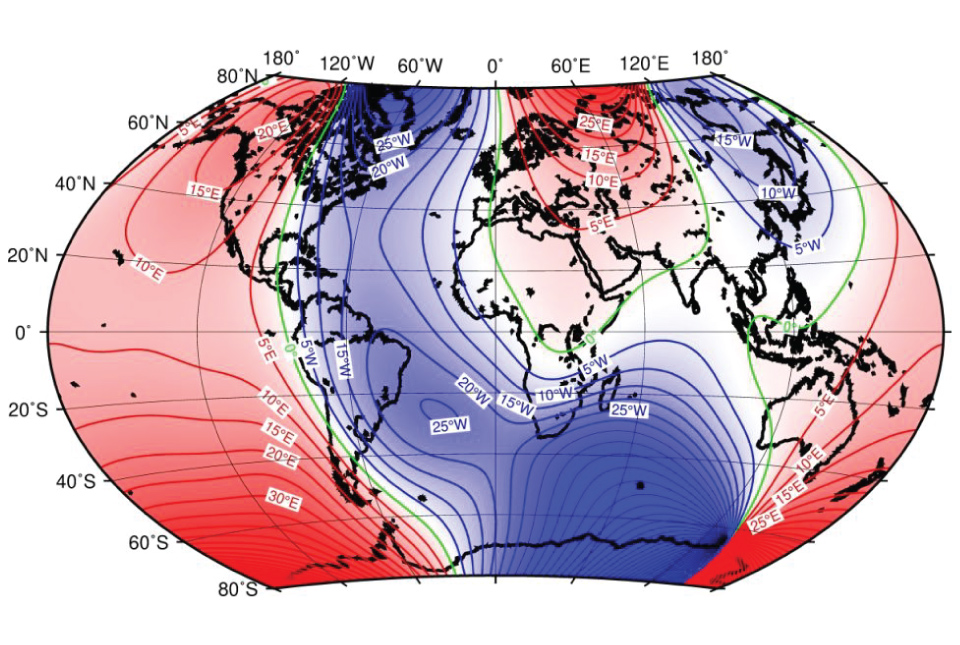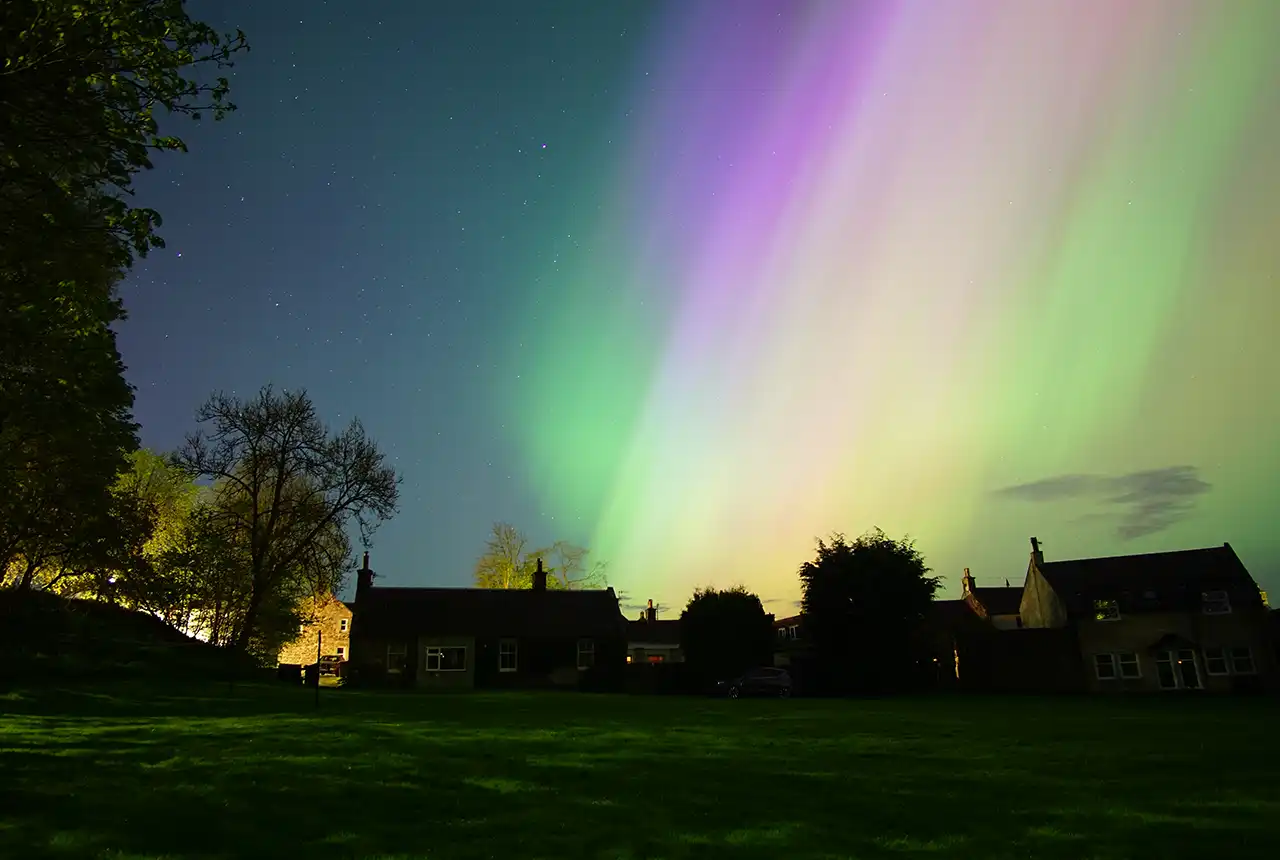A-roaring display
The dazzling and colourful aurora borealis, or northern lights, observed by many across the UK last weekend was one of the most extreme and long-lasting geomagnetic storms recorded in the last 155 years.
16/05/2024
Without getting into the specifics, coronal mass ejections (CMEs) are common occurrences where a portion of the Sun’s outer atmosphere is ejected into space, caused by rapid changes in its magnetic field. CMEs often occur along with solar flares, which are unleashed from active regions called sunspots. Last week’s active sunspot, now rotating out of view of the Earth-facing solar disc, was particularly active, emitting a series of Earth-directed CMEs from mid-early last week.


This series of consecutive solar flares and their associated CMEs arrived in Earth’s atmosphere in the early evening on 10 May 2024. Amazingly, last week’s storm is not just any geomagnetic storm; it shares characteristics with a few of the largest storms since 1869, such as the 2003 Hallowe’en geomagnetic storm. 1869 is the year in which geomagnetic global storm index, the aa index, was first used to measure daily geomagnetic activity. The aa is derived from magnetic observatory data.
On the ground, we can continuously and accurately measure magnetic field variations over many years at geomagnetic observatories. In the UK, we have three permanent observatories:
- Lerwick, Shetland
- Eskdalemuir, Dumfries and Galloway
- Hartland, Devon
Other, newer magnetic measuring stations can be found in Northern Ireland, Leicestershire and Herstmonceux.
We would expect variations of the local geomagnetic field to be greatest at Lerwick because it is the northernmost location. Looking at background conditions with no storms, the horizontal magnetic field intensity at Lerwick varies around 30 to 50 nanoTesla (nT). On the evening of the 10 May, the peak variations in horizontal field intensity reached 800 nT!
Usually, with smaller geomagnetic storms, the naked eye is unlikely to observe the aurora at latitudes south of Scotland and that’s assuming we have clear, dark skies free from light pollution. With this big geomagnetic storm, which still requires a name, many people in large cities across England were able to observe vivid colours on the 10 to 11 May.
Events like last weekend will become useful case studies for scientists to gain a better understanding of the effects of space weather on Earth. This will help to improve our capability to forecast severe space weather events that could be even stronger than the one we recently experienced. More extreme space weather events may cause damages to power grid systems and operational satellites, affecting things like GPS and mobile networks.
While we are not expecting further significant geomagnetic activity this week. As we are approaching solar maximum, further large events such as this one are expected in the coming years.
About the author

Guanren Wang
Geomagnetism scientist
Relative topics
Related news

New collaboration aims to improve availability of real-time hazard impact data
19/06/2025
BGS has signed a memorandum of understanding with FloodTags to collaborate on the use of large language models to improve real-time monitoring of geological hazards and their impacts.

New Memorandum of Understanding paves the way for more collaborative research in the Philippines
21/01/2025
The partnership will focus on research on multi-hazard preparedness within the country.

New global space weather hazard index launched
17/01/2025
The new index provides a near-real time, global picture of geomagnetic variations helping to highlight the effects of space weather.

Twenty years on: the Indian Ocean earthquake and tsunami
26/12/2024
Boxing Day 2024 marks 20 years since the Indian Ocean earthquake and tsunami. Prof David Tappin reflects on the disaster and discusses what we have learnt since 2004.

Airlines, shipping companies and sleigh drivers rush to update crucial navigation systems ahead of Christmas rush
17/12/2024
Release of major upgrade to a new model tracking magnetic north prompts global reset of satellite tracking systems across trade and passenger transport routes.

Studying multi-hazards from space
25/07/2024
A new European Space Agency-funded project will study the effect earthquakes have on occurrences of other natural hazards in the long-term.

A-roaring display
16/05/2024
The dazzling and colourful aurora borealis, or northern lights, observed by many across the UK last weekend was one of the most extreme and long-lasting geomagnetic storms recorded in the last 155 years.

New BGS Chief Scientist for multi-hazards and resilience announced
09/05/2024
Prof Jonathan Chambers has been appointed as the new BGS Chief Scientist for multi-hazards and resilience, effective from 1 June 2024.

BGS leads update to maps of the Earth’s magnetic field
04/04/2024
The International Geomagnetic Reference Field, used for navigation on mobile phones and in space, is updated every five years.

Will 2024 be the Year of the Aurora?
23/02/2024
The Sun’s approximate eleven-year activity cycle is predicted to peak this year, prompting BGS scientists to anticipate that 2024 will be the ‘Year of the Aurora’.

From the Earth’s core to outer space: understanding the magnetic field
Event on 26/03/2024
A special webinar focusing on our our geomagnetism research, including how we measure the magnetic field, everyday applications and mitigating the threats of space weather.

BGS to lead new research project on barrier systems to support more sustainable coastal management
06/12/2023
Scientists at BGS will lead a new four-year project that will enhance our understanding of gravel barrier systems across the coastlines of the UK.











